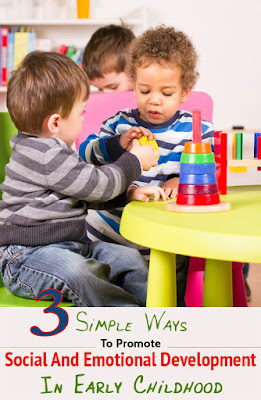This portal gives you information about, biography, current events,
Science knowledge, schemes, historical places, jobs and new government schems.
Share its information on facebook, Twitter, Instagram and what's up group, to be update about latest news.
Defining socio-emotional and moral development
An analysis of the cases presented below offer an interesting beginning point in understanding the features of socio-emotional and moral development among children.
Radha is very happy child. She takes initiative in all activities at the school. She is quite popular among her peer group as she is always ready to help them. She is regular and sincere in her work.
Invariable, you will find Akshay sitting in corner who appears unhappy and unwilling to join in activities with other children. He does not mix with any body. He does not copy the homework.
You will quite often find ranjan teasing or beating somebody. He just does not listen to anyone. parents and teachers are tried of him because there will always be complaints against him.
Each of these cases gives us some ideas of the socio- emotional and moral development of the particular child. Emotional developments do not takes place in a social vaccum.
As you now know,
Radha is a happy child and always ready to help others.
Akshay is very shy.
Ranjan is quite naughty.
You may wonder what causes these individual differences.
The causes consist of an interrelated set of factors.
If you see Radha who always shows pleasant disposition, is socially well adjust, popular not only with her peers but also with her teachers. As it is mentioned, her parents take a lot of interest in all her activities and she has developed a sense of basic trust in her parents.
Pattern of social development
Since our aim is to ensure balanced socio-emotional and moral development among children, let's us try to understand the pattern of these aspects of development in them.
● you have observed young children smiling when they see their mother, and crying intensely when they see any stranger. This shows the special bond that exists between the mother and the child.
This emotional bond effects a wide emotional and social development.
●social smile appear
about 4 to 6 months infants start recognizing their mother.
● stranger anxiety
Children show signs of fear and anxiety in the presence of a strange person, and immediate reaction of children is to seek the security of their mother.
● separation anxiety
As children develop more familiarity with people, their anxiety towards strangers reduces, however there is another source of anxiety that emerges which is known as separation anxiety. Children will cry and feel upset when they do not find their mother.
Te appearance of separation anxiety is a further indication of the strong emotional bond between mother and child.
All of the above behaviour, the social, smile stranger anxiety , separation anxiety, from major milestone in the emotional and social development of the infant 's first year life.
Preschoolers
Preschoolers continue to use their mother/father figures as secure base to explore the enviornment. At this stage, they can tolerate short separation from their parents. But, still they are strongly attached to and dependent on them. The most significant change one find is their extension of attachment to other adults and to other children. These attachment behaviours are often called attention.
Example
You may have parents and try to get parents approval and attention.
Preschooling period involves a transition from interaction that are basically self oriented to interaction that are other oriented.. this period is also characterized in part, by the beginning of children's self concept their image of themselves.




Comments
Post a Comment
Thank u for comment